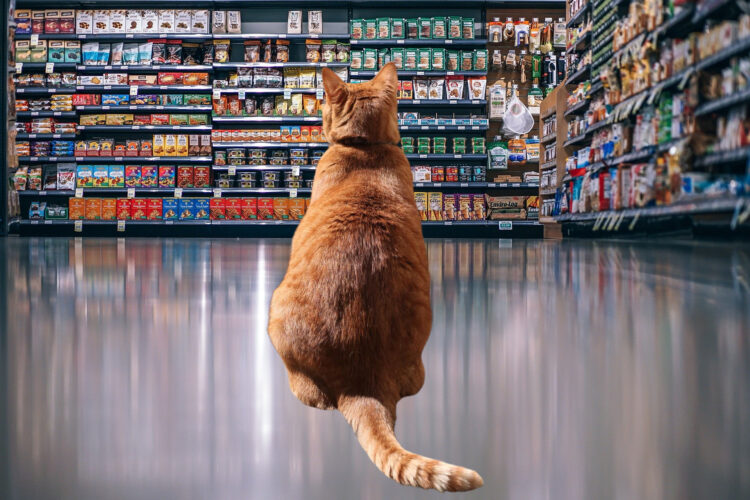
This post is sponsored by Darwin’s Natural Pet Products
As responsible cat parents, it’s up to us to make sure that we’re feeding our cats a diet that ensures optimal health. For most of us, that means that we’re going to compare different brands. In theory, pet food labels should offer an easy way to do that. Unfortunately, nothing could be further from the truth. In this article, we’ll explain what the jargon on pet food labels really means.
Pet food labels are mostly about marketing
Our cats couldn’t care less what the can or bag their food comes in looks like. They don’t care about pretty label and brand colors or adorable cats and kittens on the label, but you can bet that pet food companies spend major marketing dollars on determining exactly what appeals to cat parents when they design their labels. Terms like “natural” and “human grade” and photos of wholesome vegetables and grains (something cats don’t even need in their diet!) are intended to make cat parents think that they’re getting a really high quality food. In reality, these terms have very little meaning and no legal definition.
The only way you can be sure to understand what’s really in a food is by knowing how to read the label. Here are some things to look for:
Ingredients
Pet food manufacturers are required to list ingredients in descending weight order; in other words, the most predominant ingredient has to be listed first. Look for meat based proteins as the main ingredient and avoid anything that lists corn or soy and their by-products – these two ingredients are some of the prime culprits for causing allergies in pets. Some foods may list meat by-products. By-products have gotten a bad rep; some of these may contain highly digestible organ meat, so not all meat by-products are necessarily “bad.”
Ingredients such as peas, carrots, cranberries, blueberries and the like are added because as humans, we think of fruit and veggies as healthy. Cats don’t need these ingredients to thrive. While a small amount of veggies or fruit can be a source of antioxidants and vitamins, in many foods, the amounts are not significant enough to make a difference.
Guaranteed Analysis
Manufacturers are required to list basic nutrient percentages on the label. Typically, this portion of the label will list the minimum amounts of crude protein and crude fat and the maximum amounts of crude fiber, moisture, and ash content. Note that there is no listing for carbohydrates on food labels, which is a very important consideration when it comes to feeding cats, who are obligate carnivores. A high carb feline diet can lead to any number of degenerative diseases, including diabetes, kidney disease, and inflammatory bowel disease. However, it is not difficult to calculate approximate carbohydrate contents. Simply add all of the listed nutrients and subtract the total from 100% – this will give you a fairly accurate number.
AAFCO Statement
This is probably the most misunderstood item on pet food labels. AAFCO, the American Association of Feed Control Officials, is a non-profit organization whose primary goal is to regulate safe practices in the pet and animal food industry. Membership includes government officials who are able to regulate how animal consumables are sold. Its primary responsibility is to ensure the safety of feed for human food producing livestock. The AAFCO statement on most pet food labels indicates that the food has been tested and approved as “complete and balanced for the life of a pet.” This is sadly misleading. The tests are conducted on very small groups of animals and for very short periods of time. The only long-term tests of pet food happen when cat parents feed these diets.
Debunking catchy statements on pet food labels
Beware of catchy phrases used on pet food labels, because a lot of times they don’t really have any meaning. For example, the term “natural” only means that a food must be made without artificial colors, flavors and preservatives. It is not a statement on the overall quality of the food. The term “organic” can also be misleading, because there are no official rules governing the labeling of organic foods for pets.
One of the most misunderstood terms is the term “human grade.” According to AAFCO, “this term has no definition in any animal feed regulations.” Only products that are produced in a plant that also produces human foods may legally be labeled ‘”human grade.”
Just like selecting food for yourself and your human family members, choosing healthy food for your pets comes down to educating yourself, reading labels, and not falling for marketing hype. Your pets will thank you for it.
About Darwin’s Fresh, Raw Pet Food
I have been feeding Darwin’s to my cats for the past six years and watched them thrive. As far as I’m concerned, Darwin’s is doing everything right, both in terms of what’s in the food and what’s not:
- 100% meat – no animal-by-products or fillers
- Ethically sourced human grade ingredients from farms they trust
- Formulated under the guidance of veterinary nutritionists
- Free range, pasture raised, cage-free meats
- No GMO
- No steroids
- No hormones
- Made fresh: you will receive your meals 4-6 weeks from production
- Ready to serve
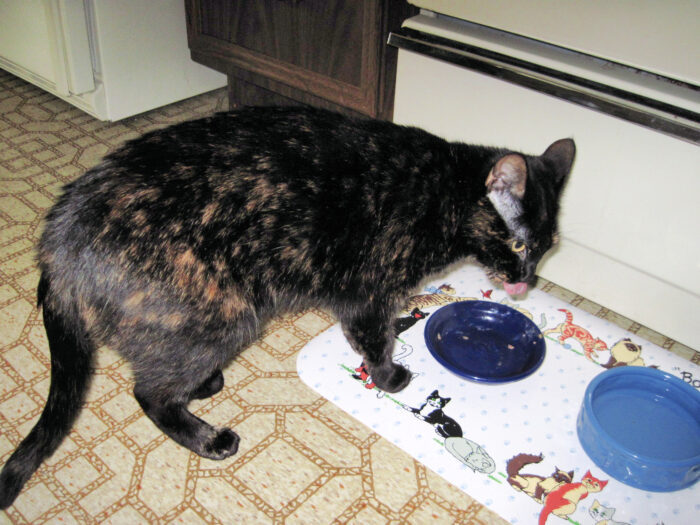
Special offer: get 10 pounds for $14.95
Darwin’s has an introductory offer that can’t be beat so you can try this for your own cats: For $14.95, you get 10 pounds of raw food. You can customize the proteins depending on your cat’s taste preferences.
Use code PURRSOFWISDOM to take advantage of this special offer.
For more information and to order, please visit DarwinsPet.com.
*FTC Disclosure: This is a sponsored post, which means that I was compensated to feature this content. Regardless of payment received, you will only see products or services featured on this site that we’ve either used or would use ourselves. The Conscious Cat is a participant in Darwin’s affiliate program. This means that if you decide to purchase through any of our links, we get a small commission.
Image Pixabay

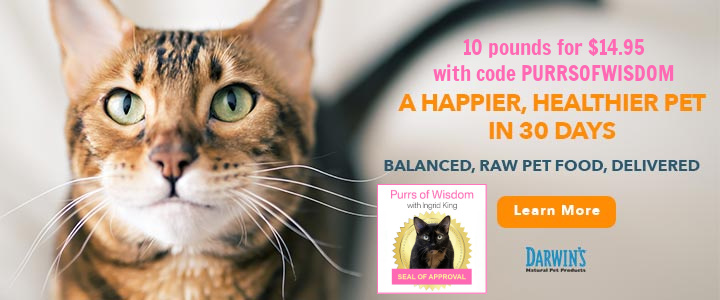
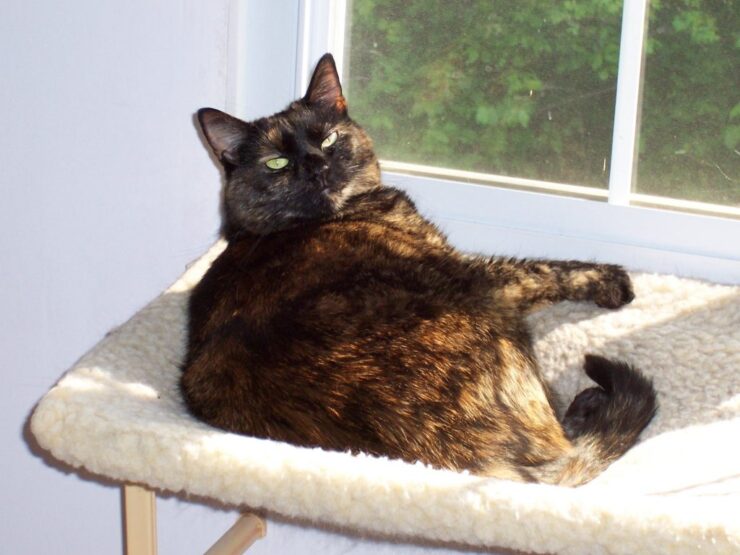
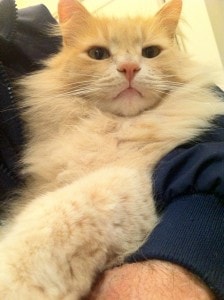
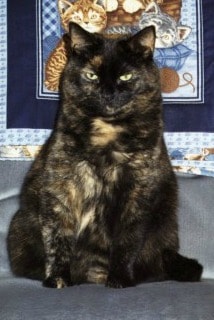
Thank you. I’ve been advised that my recently adopted cat shouldn’t have raw food because he’s FIV positive. What are your thoughts?
I don’t recommend raw food for FIV+ cats or cats that are otherwise immununocompromised. I would go with a gently cooked fresh diet, or a premium canned diet.
Thank you for this information! Labels can be so confusing. Even human food labels are confusing.
My fur babies are so picky it isn’t funny. One is more picker than the other. I also would like too see the ingredients a little larger so I can read it. I g=have too bring a magnifying glass too the store.
Ha, I know the feeling, Darlene! My arms aren’t long enough anymore to read the small print!
This is incredibly helpful. I recently ran the gauntlet of foods because Blazie developed allergies and it was a trial and error situation. I admittedly fell for the buzzwords on many options and I thought organic carried over to pet food. All of this is very helpful as I’m still looking for one that works that she will eat. Darwin’s will be my next one I try. Thank you for the information, it is very overwhelming when faced with aisles of choices.